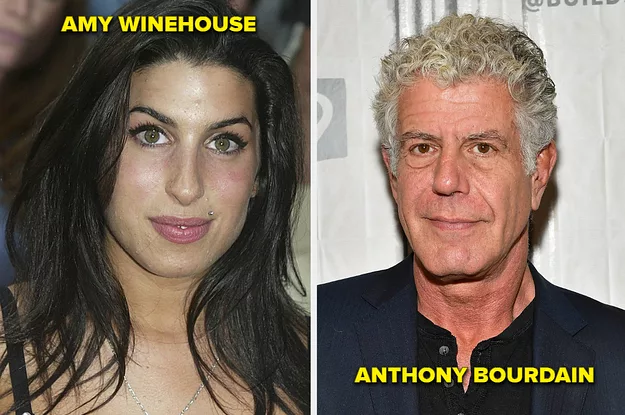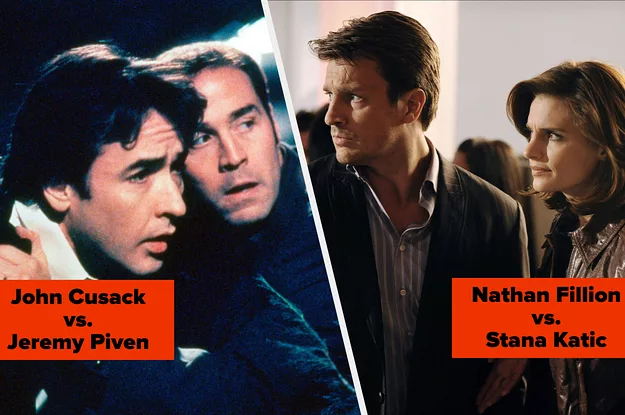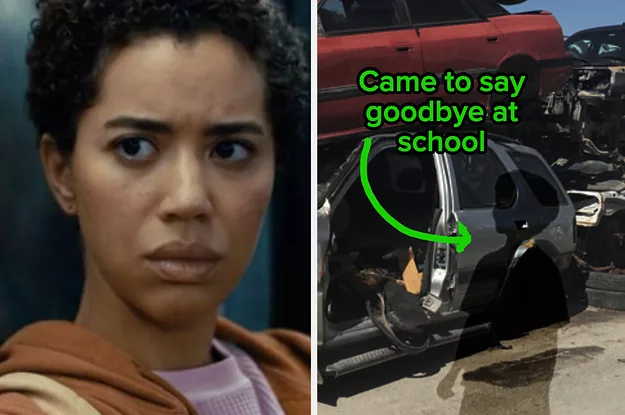

Have you ever gone down a major internet rabbit hole after watching a movie or a TV show that’s based on real events? TBH, it might just be one of my favorite pastimes.
I rounded up some of the most interesting real-life events that were turned into on-screen moments, from the horrific crime spree that inspired Scream to the group of teens that Stranger Things‘ Eddie Munson was based on.
1. Stranger Things‘s Eddie Munson, played by Joseph Quinn, became one of the breakout characters of the show’s most recent season. His storyline, which involves him being accused of a murder he didn’t commit because of his love for playing Dungeons & Dragons with the Hellfire Club, was inspired by Damien Echols, who was similarly accused of murder in 1994 as part of the West Memphis Three.
On May 5, 1993, three eight-year-old boys went missing while riding their bikes in West Memphis, Arkansas. The next day, police found their bodies bound and mutilated in a drainage ditch. Authorities believed the murders were tied to devil worship, and immediately turned their attention to Damien Echols, an 18-year-old high school dropout and self-proclaimed Wiccan. A local woman claimed she had evidence that helped police link Echols, his best friend Jason Baldwin, and Jessie Misskelley Jr. to the murders. Misskelley told police that he helped Echols and Baldwin detain the young boys, then left before they were murdered.
In June 1993, all three were arrested, despite the fact that they had alibis, and there was no physical evidence that linked them to the murders. Miskelley went on trial separately. There were several inconsistencies in his testimony, but he was sentenced to first- and second-degree murder and sentenced to life without parole. Miskelley refused to testify at Echols and Baldwin’s trial, so the police had to rely on circumstantial evidence, including Echols’ interest in Metallica and Stephen King’s novels. Both Echols and Baldwin were found guilty of first-degree murder, and Echols was given the death penalty. In 1996, the documentary Paradise Lost aired on HBO. The documentary raised serious doubts about the involvement of the West Memphis Three, and the men soon began receiving support from the public. Two more installments of the documentary were released. In 2011, their convictions were vacated and they were released from prison.
So, what drew the Duffer Brothers to this case while writing Eddie’s character arc? “We really wanted that character who’s a metalhead, he’s into Dungeons & Dragons, he’s ultimately a true nerd at heart,” Ross said. “But from an outsider’s point of view, they may go, ‘This is someone that is scary.’ So that’s really where the idea for Eddie came in.” Elements of Echols’ story, including his interests, are especially visible in the character. “What’s sad about [Eddie’s] narrative is that the people who get to know him love him, and the people who don’t have judged him horribly, just because of the way he dresses and just because of his interests.”
2. In September 1961, Betty and Barney Hill, a married couple, were driving back to their home in New Hampshire from a camping trip in Canada when they claimed they had been abducted by aliens. The Hills reported seeing lights in the sky before allegedly witnessing a spacecraft full of “bipedal humanoid creatures” land in a nearby field. Following the landing, the Hills said they had no recollection of the next few hours. When the couple returned home, they said they noticed several alarming changes: Betty’s dress was allegedly stained and torn, Barney’s shoes were scraped, and the leather strap of their binoculars was destroyed.
In the years after the alleged abduction, the Hills were still experiencing lingering effects, and they sought hypnosis therapy to help them recall exactly what happened to them. After about a year of therapy, both began to piece together stories about what they experienced. They also drew a diagram of the spacecraft that became one of the first examples of the flying saucer UFO. By 1965, their story had been published in a Boston newspaper. Soon after, the story was expanded into a book called The Interrupted Journey and was later adapted into The UFO Incident, a movie starring James Earl Jones.
While the Hills’ story was not the first time civilians had claimed to come into contact with aliens, it was one of the first times that the experience had been portrayed as anything but friendly. Some believed that the Hills had made the entire thing up. The Air Force ultimately dismissed the Hills’ story. The Hills’ story has since appeared in pop culture, most notably in American Horror Story: Asylum.
3. During Hurricane Katrina in New Orleans, over 2,000 doctors, nurses, patients, and other hospital personnel were sheltered inside Memorial Hospital. As Katrina doused the city, windows shattered and the building shook as the occupants huddled for cover. At some point early the next morning, the power in the hospital went out, rendering some patients, who relied on electronic medical devices to survive, in grave danger. Although the hospital was equipped with generators, they were only designated for emergency lights and equipment that was deemed necessary for survival.
Once the storm passed, Memorial’s occupants, largely unaware of the true impact of the storm, awaited rescue. By the morning of August 30, the levees holding back the stormwater snapped, sending water from nearby Lake Pontchartrain flooding through the city. The power grid at Memorial Hospital was located only a few feet above ground, leaving it at risk of severe electrical damage. There was no choice but to evacuate the hospital, including over 200 vulnerable patients. The hospital’s emergency plan did not cover what to do in case of a flood, so executives quickly formulated new guidelines: critical patients and babies in the NICU would be rescued first, while anyone with a Do Not Resuscitate order would be the last to leave because they “had the least to lose.”
The issue? Memorial Hospital was home to LifeCare, an independent hospital for patients that needed close care around the clock. Most of LifeCare’s 52 patients were on ventilators and were largely left out of the rescue conversations being held by hospital executives. As patients from the main hospital began the evacuation process, LifeCare employees realized they weren’t included in the evacuation and were told that if they wanted to be rescued, they needed to seek permission from hospital executives. Dr. Ewing Cook, who worked for Memorial, ordered that all treatments, except those deemed essential, be stopped to lessen the burden on nurses. On August 31, the generators failed, with all 52 LifeCare patients still inside the hospital.
By September 1, employees at Memorial and LifeCare brought all remaining patients to the hospital’s first floor and categorized them by likelihood of survival in order to determine who to evacuate first, with Dr. Anna Pou leading the charge. After seeing how slowly the evacuation was progressing, Pou and a team of nurses allegedly gave LifeCare patients a dose of morphine and Versed, a fast-acting sedative, a combination that was known to induce death. When the hospital was investigated in the weeks following Katrina, 45 bodies were recovered. After performing toxicology reports on the bodies, investigators discovered that 23 of them tested positive for the deadly combination, and all had died in the same three-hour span. Doctors later told authorities that they overheard Pou and Cook discussing euthanasia.
It was later determined that at least nine of the deaths could be deemed homicides. On July 17, 2006, Pou was arrested and charged with four counts of second-degree murder, while Lori Budo and Cheri Landry, nurses who assisted Pou, were arrested. Budo and Landry had their charges dropped in exchange for their testimony. In 2007, a grand jury decided not to indict any of the suspects for their actions at Memorial Hospital. Pou is still a practicing doctor in Louisiana. Sheri Fink chronicled the story in her book Five Days at Memorial. An adaptation of the book, also called Five Days at Memorial, premiered on Apple TV+.
View this video on YouTube





